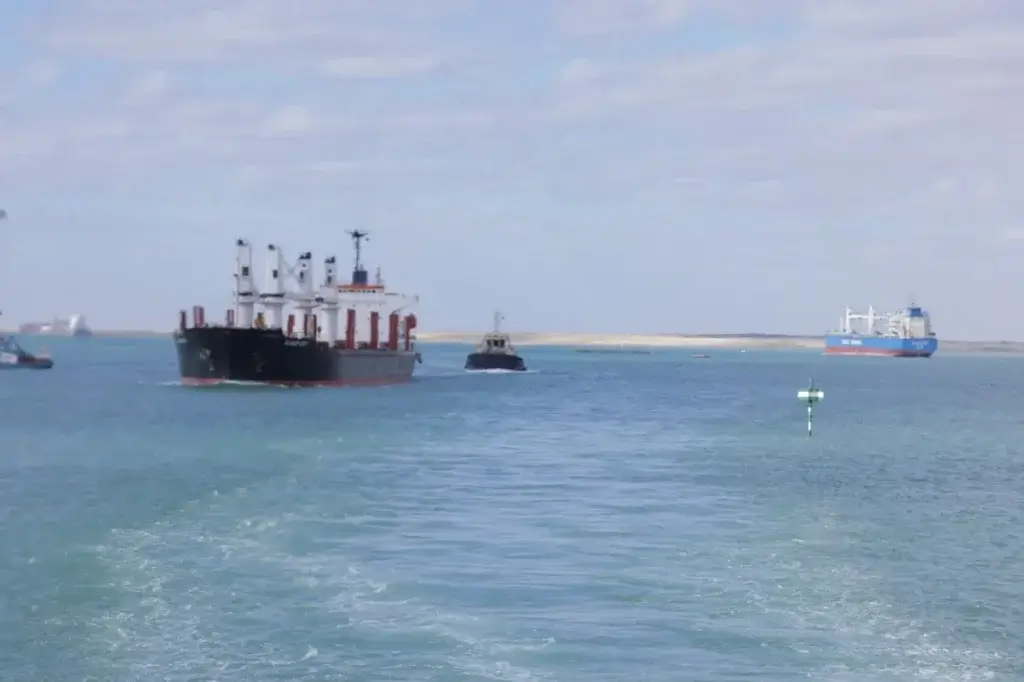Data presented by Xeneta, a platform tracking maritime and air rates, shows that in the week ending January 14, air freight volumes from Vietnam to Europe increased by as much as 62% week to week.
This was also 6% larger than the best week for volumes in 2023 (in October) and 16% better than the result from the second week of January in 2023.
“This is the first signal in Xeneta data that the Red Sea crisis is impacting air freight. This is typically a quieter time of year for air freight so to see increases of this magnitude, with higher volumes than at any point in 2023, is significant.” explains Niall van de Wouw, chief airfreight officer at Xeneta.
Van de Wouw adds that the increase in air volumes on the route from Vietnam indicates that the clothing industry, which largely produces in this country, is switching from ships to planes.
This shows that shippers and importers are beginning to turn their attention to air freight in the face of the protracted crisis in the Gulf of Aden and the Red Sea.
In December, in the face of the conflict in the Gaza Strip that has been ongoing since October, Yemen’s Houthi fighters announced that they would attack Israeli ships and then also those sailing to Israel. As a result, many international shipowners began to avoid the waters around Yemen.
However, these are of strategic importance on a global scale. There is the Bab al Mandab Strait, which is the gateway to the Red Sea. These, in turn, lead directly to the Suez Canal. About 12% of the water flows through the Suez Canal value of global trade (including the majority of oil from the Arabian Peninsula and the Persian Gulf region to Europe) and approximately 30% of container volume in the world. The vast majority of goods imported from Asia to Europe flow through the Suez Canal.
In the face of attacks by the Houthis, most shipowners decided to avoid the route through the Suez Canal, choosing a route around Africa around the Cape of Good Hope. However, this route is approximately 10 days longer in the case of northern European ports, or even two weeks longer in the case of those located on the Mediterranean Sea.
Moreover, the restriction of transport through the Suez Canal has significantly increased container rates around the world. The WCI index by maritime analysts at Drewry for the route between Shanghai and Rotterdam rose from just over $1,400 for a 20-foot container in mid-December to $4,984 in yesterday’s reading.
Rates on the route from China to Genoa have similarly increased significantly – from just under $1,700 in mid-December to $6,365 this week. Nevertheless, it is worth emphasising that after several weeks of significant increases, last week brought a more modest 1% increase in prices.
Dramatic price increases and delivery delays have generated interest in air freight
Due to increased demand, air rates from India and China to Europe have increased by 10% compared to the previous week. According to an expert from Xeneta, the next two weeks will show whether this is a permanent trend.
Last year, the air transport market was characterised by a decline in demand (due to the economic slowdown in Europe, especially) as well as an increase in supply (which was a result of the lifting of pandemic restrictions and the return of large-scale air passenger traffic).
Air freight capacity is available. However, a further increase in demand for air transport, if the crisis in the Red Sea persists, will curtail capacity and thus an accelerated increase in rates. It should also be remembered that the Chinese New Year celebrations begin on February 10, which will drain the supply of transport capacity from the market due to greater demand in Asian markets.
This holiday is celebrated not only in China and Taiwan, but also in many Asian countries with a significant Chinese minority, such as Malaysia, Singapore and Indonesia, as well as Vietnam and South Korea. As a result, if European demand for air freight continues due to the situation in the Red Sea, further pressure on air rates can be expected in February.
Going through Dubai
However, while there is a lack of transport capacity from Asian airports, all is not lost. There is also an alternative route from Asia to Europe in the shape of a sea-air combination. Experts from Xeneta expect that in the coming weeks there will be an increase in interest in transport to Europe via the UAE.
The journey by ship from Asian ports to the UAE and from there by plane to Europe is estimated to take three weeks less than the sea only option around the Cape of Good Hope.
According to Xeneta, in the two weeks to January 7, demand for cargo flights from the city in the United Arab Emirates to Europe increased by 11% compared to the previous two weeks. In the same period last year, a double-digit volume decline was recorded on the route.
California perhaps?
A surprising alternative is also a sea-air connection from Asia to Europe via Los Angeles. According to Xeneta’s calculations, the ocean freight rate from China to the City of Angels was over $600 lower per 40-foot container than from China to Dubai.
Moreover, at that time the air freight rate from Los Angeles to Europe was less than a dollar per kg, while from Dubai to Europe it was $1.17 per kg. It is true that in the last two weeks, the container rate from Asia to Los Angeles (and also to New York), according to Drewry’s data, has increased dynamically (by 9% in the week before January 25), but the direction via the United States is still an interesting alternative. If only due to the fact that the total transport to Europe via Los Angeles is about 5 days shorter.
Photo: Pieter van Marion from Netherlands, CC BY-SA 2.0, via Wikimedia Commons









